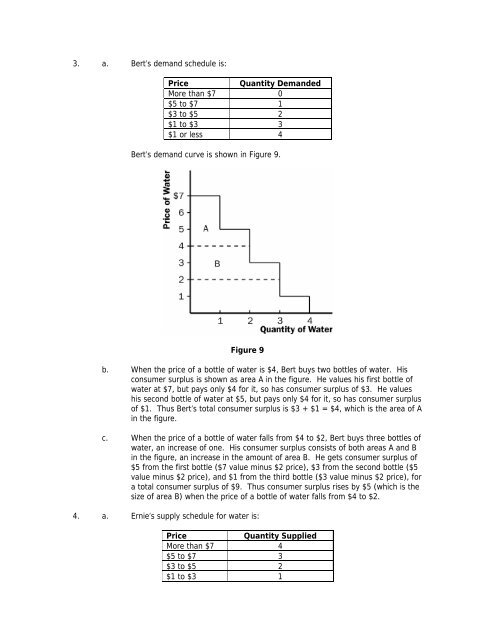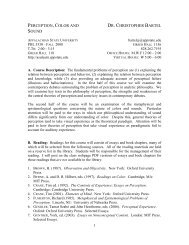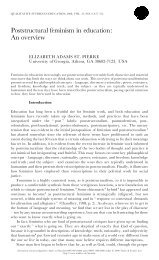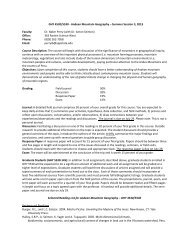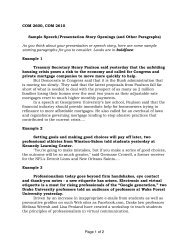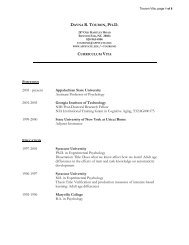3. a. Bert's demand schedule is: Price Quantity Demanded More ...
3. a. Bert's demand schedule is: Price Quantity Demanded More ...
3. a. Bert's demand schedule is: Price Quantity Demanded More ...
You also want an ePaper? Increase the reach of your titles
YUMPU automatically turns print PDFs into web optimized ePapers that Google loves.
<strong>3.</strong> a. Bert’s <strong>demand</strong> <strong>schedule</strong> <strong>is</strong>:<br />
<strong>Price</strong><br />
<strong>Quantity</strong> <strong>Demanded</strong><br />
<strong>More</strong> than $7 0<br />
$5 to $7 1<br />
$3 to $5 2<br />
$1 to $3 3<br />
$1 or less 4<br />
Bert’s <strong>demand</strong> curve <strong>is</strong> shown in Figure 9.<br />
Figure 9<br />
b. When the price of a bottle of water <strong>is</strong> $4, Bert buys two bottles of water. H<strong>is</strong><br />
consumer surplus <strong>is</strong> shown as area A in the figure. He values h<strong>is</strong> first bottle of<br />
water at $7, but pays only $4 for it, so has consumer surplus of $<strong>3.</strong> He values<br />
h<strong>is</strong> second bottle of water at $5, but pays only $4 for it, so has consumer surplus<br />
of $1. Thus Bert’s total consumer surplus <strong>is</strong> $3 + $1 = $4, which <strong>is</strong> the area of A<br />
in the figure.<br />
c. When the price of a bottle of water falls from $4 to $2, Bert buys three bottles of<br />
water, an increase of one. H<strong>is</strong> consumer surplus cons<strong>is</strong>ts of both areas A and B<br />
in the figure, an increase in the amount of area B. He gets consumer surplus of<br />
$5 from the first bottle ($7 value minus $2 price), $3 from the second bottle ($5<br />
value minus $2 price), and $1 from the third bottle ($3 value minus $2 price), for<br />
a total consumer surplus of $9. Thus consumer surplus r<strong>is</strong>es by $5 (which <strong>is</strong> the<br />
size of area B) when the price of a bottle of water falls from $4 to $2.<br />
4. a. Ernie’s supply <strong>schedule</strong> for water <strong>is</strong>:<br />
<strong>Price</strong><br />
<strong>Quantity</strong> Supplied<br />
<strong>More</strong> than $7 4<br />
$5 to $7 3<br />
$3 to $5 2<br />
$1 to $3 1
Less than $1 0<br />
Ernie’s supply curve <strong>is</strong> shown in Figure 10.<br />
Figure 10<br />
b. When the price of a bottle of water <strong>is</strong> $4, Ernie sells two bottles of water. H<strong>is</strong><br />
producer surplus <strong>is</strong> shown as area A in the figure. He receives $4 for h<strong>is</strong> first<br />
bottle of water, but it costs only $1 to produce, so Ernie has producer surplus of<br />
$<strong>3.</strong> He also receives $4 for h<strong>is</strong> second bottle of water, which costs $3 to<br />
produce, so he has producer surplus of $1. Thus Ernie’s total producer surplus <strong>is</strong><br />
$3 + $1 = $4, which <strong>is</strong> the area of A in the figure.<br />
c. When the price of a bottle of water r<strong>is</strong>es from $4 to $6, Ernie sells three bottles<br />
of water, an increase of one. H<strong>is</strong> producer surplus cons<strong>is</strong>ts of both areas A and<br />
B in the figure, an increase by the amount of area B. He gets producer surplus<br />
of $5 from the first bottle ($6 price minus $1 cost), $3 from the second bottle<br />
($6 price minus $3 cost), and $1 from the third bottle ($6 price minus $5 price),<br />
for a total producer surplus of $9. Thus producer surplus r<strong>is</strong>es by $5 (which <strong>is</strong><br />
the size of area B) when the price of a bottle of water r<strong>is</strong>es from $4 to $6.<br />
5. a. From Ernie’s supply <strong>schedule</strong> and Bert’s <strong>demand</strong> <strong>schedule</strong>, the quantity<br />
<strong>demand</strong>ed and supplied are:<br />
<strong>Price</strong> <strong>Quantity</strong> Supplied <strong>Quantity</strong> <strong>Demanded</strong><br />
$ 2 1 3<br />
4 2 2<br />
6 3 1<br />
Only a price of $4 brings supply and <strong>demand</strong> into equilibrium, with an<br />
equilibrium quantity of 2.<br />
b. At a price of $4, consumer surplus <strong>is</strong> $4 and producer surplus <strong>is</strong> $4, as shown in<br />
problems 3 and 4. Total surplus <strong>is</strong> $4 + $4 = $8.
c. If Ernie produced one fewer bottle, h<strong>is</strong> producer surplus would decline to $3, as<br />
shown in problem 4. If Bert consumed one fewer bottle, h<strong>is</strong> consumer surplus<br />
would decline to $3, as shown in problem <strong>3.</strong> So total surplus would decline to $3<br />
+ $3 = $6.<br />
d. If Ernie produced one additional bottle of water, h<strong>is</strong> cost would be $5, but the<br />
price <strong>is</strong> only $4, so h<strong>is</strong> producer surplus would decline by $1. If Bert consumed<br />
one additional bottle of water, h<strong>is</strong> value would be $3, but the price <strong>is</strong> $4, so h<strong>is</strong><br />
consumer surplus would decline by $1. So total surplus declines by $1 + $1 =<br />
$2.


